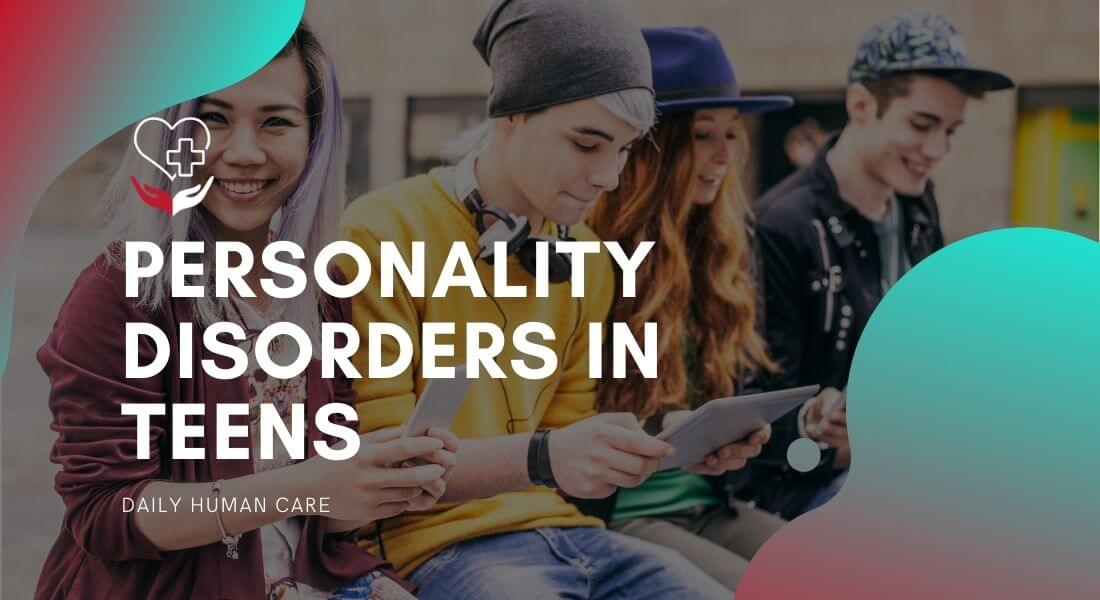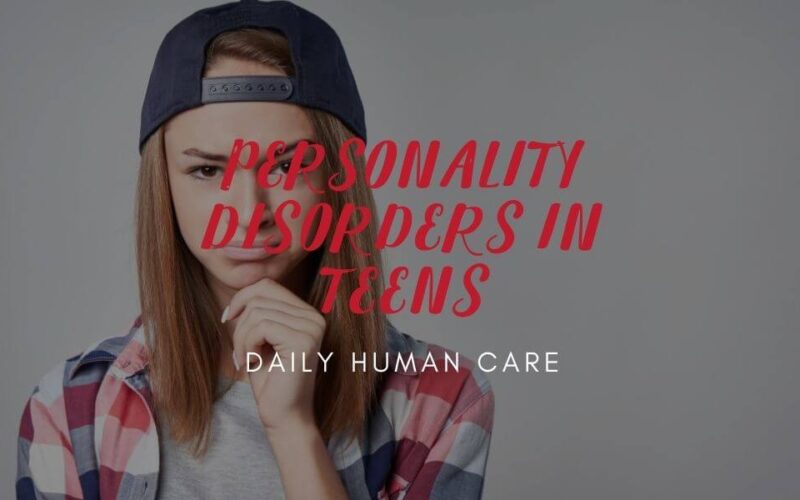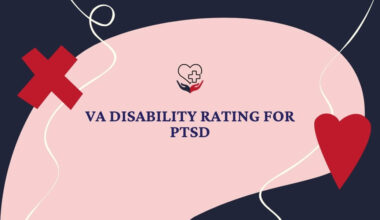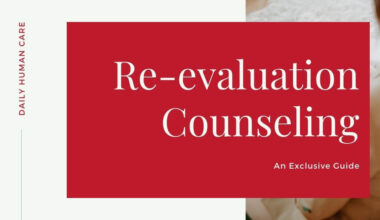In this article, Daily Human Care is going to discuss personality disorders in teens. But before discussing it lets have a look at signs and symptoms of disorders of personality
Table of Contents
Personality Disorder:
Personality disorders are a type of mental illness in which the way you think, function, and behavior, is rigid and unhealthy. A person with a personality disorder finds and relates to situations and human beings with difficulty. This leads to major problems and limitations in relationships, social work, work, and schools.
In some cases, you may not realize that you are suffering from a personality disorder because it seems natural to you to think and to act. And you might blame other people for their challenges.
Disorders in personality usually start in early adulthood or teenage years. There are many kinds of disorders of personality. Certain types may become less apparent in the middle ages.
Personality disorders in teens:
The development of personality for young people involves developing ways of thinking, feeling, and behaving. The characteristics of personality develop both because of the genetics and the conditions in which a child grows up. Experts, therefore, believe that disorders of personality are also the product of genes and the environment. A young person’s genetic profile could increase their vulnerability to personality disorder.
Experts identify four key characteristics of adolescent personality disorders:
- Failed to think and perceive
- Emotional answers problematic
- Impuls Control Over- or Unregulated
- Social interactions and relationships function difficulty
Causes of personality disorders in teens include:
• Family history of personality or other mental disorders
• Childhood violence, uncertainty, and chaos
• Diagnosis of children’s developmental disorder
• Variations in the brain and chemical structures.
Signs of personality disorder in teens.
Personality issues generally include unhealthy thoughts, working, and behavioral patterns. There is also a difficulty for adolescents with personality disorders to understand and relate to people and the world. This can contribute to their family, social life, and academic success.

Types of personality disorders:
Cluster A Personality Disorders
There are three types of Cluster A personality disorders, summarized below.
Paranoid Personality Disorder includes chronic and all-around mistrust and other people’s suspicion and motivations. This involves the conviction that others are attempting to hurt or manipulate you. Furthermore, people with this condition refuse to trust others and are also offended easily.
Schizoid Personality Disorder Features a lack of social or personal involvement. Furthermore, this condition entails a sense of enjoyment and a reduced range of emotional speech.
Schizotypal Personality Disorder Excentric ways to speak or talk have symptoms. Also, there is social anxiety, distrust, and a flat emotional effect in people with this condition. They may also feel that through their thoughts they can affect people and events. They also assume that secret messages contain only for them in regular events.
Cluster B Personality Disorder
Antisocial Personality Disorder
This Personality disorders in teens display a lack of concern for the needs or feelings of others. Furthermore, deception, theft, and other forms of deceiving people may be part of the antisocial condition. Besides, this condition can be offensive and abusive.
Antisocial disorder people sometimes ignore their protection or the security of others. As a consequence, the rights of others are routinely abused and persistent legal disputes arise. Besides, they have no guilt or how it affects other people.
Histrionic Personality Disorder
To diagnose the disorder of histrionic personality in adolescents, a person must show the following signs or signs in five or more ways:
• Self-centeredness—uncomfortable if not the focal point
• A relentless quest for consolidation or consent
• Seductive appearance or act improperly
• Rapidly changing emotional environments that seem superficial to others
• To deal too much with the physical appearance, and to attract attention to oneself by physical appearance
• Services affected by others
• Too dramatic, with overwhelming emotional displays
Narcissistic Personality Disorder
Narcissistic Disorder affects approximately 6 % of people across the country but is more prevalent in younger people. This disorder affects more men than women and often starts at adolescence or early adulthood.
Narcissistic Disorder for Personality disorders in teens is an extreme narcissistic version. Besides, it is one of the most difficult personality diseases to diagnose, because other mental conditions or simply difficult personality characteristics may be mistaken by the symptomology. Narcissistic trends include having grandiose ideas and achievements about oneself. Narcissists are therefore seeking excessive admiration from other individuals and society in general.
Dissociative Identity Disorder
Dissociative identity disorder is the right medical terminology for multiple personality disorders. Thus a diagnosis that shows that an individual has two or more distinct personality conditions is Dissociative Identity Disorder (DID).
DID people often suffer from deep trauma, sometimes because of abuse. As a coping mechanism, they, therefore, dissociate themselves from the trauma-related pain and fear.
Borderline Personality Disorder
The DSM-5 defines borderline disorder as a pattern of self-perception and relationship instability. Among the most frequent symptoms of the disorder are:
• Self-sustainability
• Concentrate on abandonment or refusal
• Misfitting indignation
• Confidence that changes lead to failure
• You don’t want to be alone
• Suicidal tendencies or self-harm
Avoidant Personality Disorder
Avoidant Disorder for Personality (APD) is one of the personality disorders of Cluster C. In the United States, approximately 5.2 % of the adult population suffers from preventative personality disorder.
APD symptoms include excessive criticism or rejection sensitivity, feelings of inferiority, and extreme shyness. People with this disorder therefore avoid interpersonal and social activities.
Dependent Personality Disorder
Another disorder of personality disorders in teens involves excessive dependence on others. This disorder Teenagers with this personality disorder show a clinging behavior and fear of self-care.
Furthermore, lack of trust is another symptom of this disorder. Thus, adolescents with dependent personality disorder require over-consultation and other reassurance to make even small decisions. Moreover, it is difficult for them to start or complete their projects. And they fear disapproval excessively.
Obsessive-Compulsive Disorder
OCD is a kind of disorder of anxiety. The following include the symptoms of obsessive-compulsive personality disorder:
- Carefulness and regulations
- Extraordinary perfectionism
- Need for people, tasks, and situations to be controlled
- Prioritizes work or a project over interpersonal links
- Strong and uncompromising on values and standards.
Also read, personality disorders in children
Signs of personality disorder in teens.
Personality issues generally include unhealthy thoughts, working, and behavioral patterns. There is also a difficulty for adolescents with personality disorders to understand and relate to people and the world. This can lead to the suffering of their family, social life, and academic development.
Diagnosis of a Personality Disorder in Teens
A teenager must fulfill the criteria set out in the DSM-5 for this disorder to be diagnosed with a personality disorder. Besides, the diagnosis of a personality disorder in adolescents requires symptoms to cause difficulties in daily life.
For a personality disorder to be diagnosed, the disorder must cause significant distress. Furthermore, in at least two of the four key areas mentioned above, distress and impairment should be affected.
It may be difficult to diagnose adolescent personality disorders, as certain symptoms of these disorders are common. Moreover, teens can be affected by many personality disorders. And more frequent psychological disorders, such as anxiety or depression, can make the diagnosis more complicated. A professional evaluation is therefore important.
Can Teens with Personality Disorders Have Other Disorders Too?
As co-occurring disorders, along with psychological conditions, personality disorders in teens are common. Along with personality problems, some disorders are common:
- High depressed condition
- Generalized Anxiety disorder
- Disorder of drug abuse
- post-traumatic stress disorders disorder
- Eating disorder (Nervous anorexia or Nervous bulimia)
- ADHD
- Disorder of Panic
- Bipolar disorder
Mood disorders:
The mood disturbance is characterized by an emotional state that remains constantly difficult even though no clear cause or circumstances is changing.
Mood-disrupted teens can show very negative thoughts, consistently low moods, and suicidal thoughts.
Some adolescents have both manic symptoms and depressing symptoms, exhibit unchecked, agitated behavior, irritability, restlessness, etc. These feelings occur and change in waves, usually at least once or twice a year.
Risk factors of personality disorders in teens include
- History of the family
- Earlier mood disorder diagnosis
- In the case of depression, trauma, stress, or major life changes
- Physical disease or medicinal use. Depression is linked with important conditions including cancer, diabetes, and Parkinson’s disease.
- Brain structure and bipolar disorder function
Symptoms
- Feel sad almost every day or most of the time
- Lack of power or leniency
- Feel valuable or hopeless
- Appetite or excessive food loss
- Weight increase or weight loss
- Loss of interest in formerly enjoyable activities
- Too much or insufficient sleep
- Common thoughts on death or suicide
- Concentrate or focus difficulties





